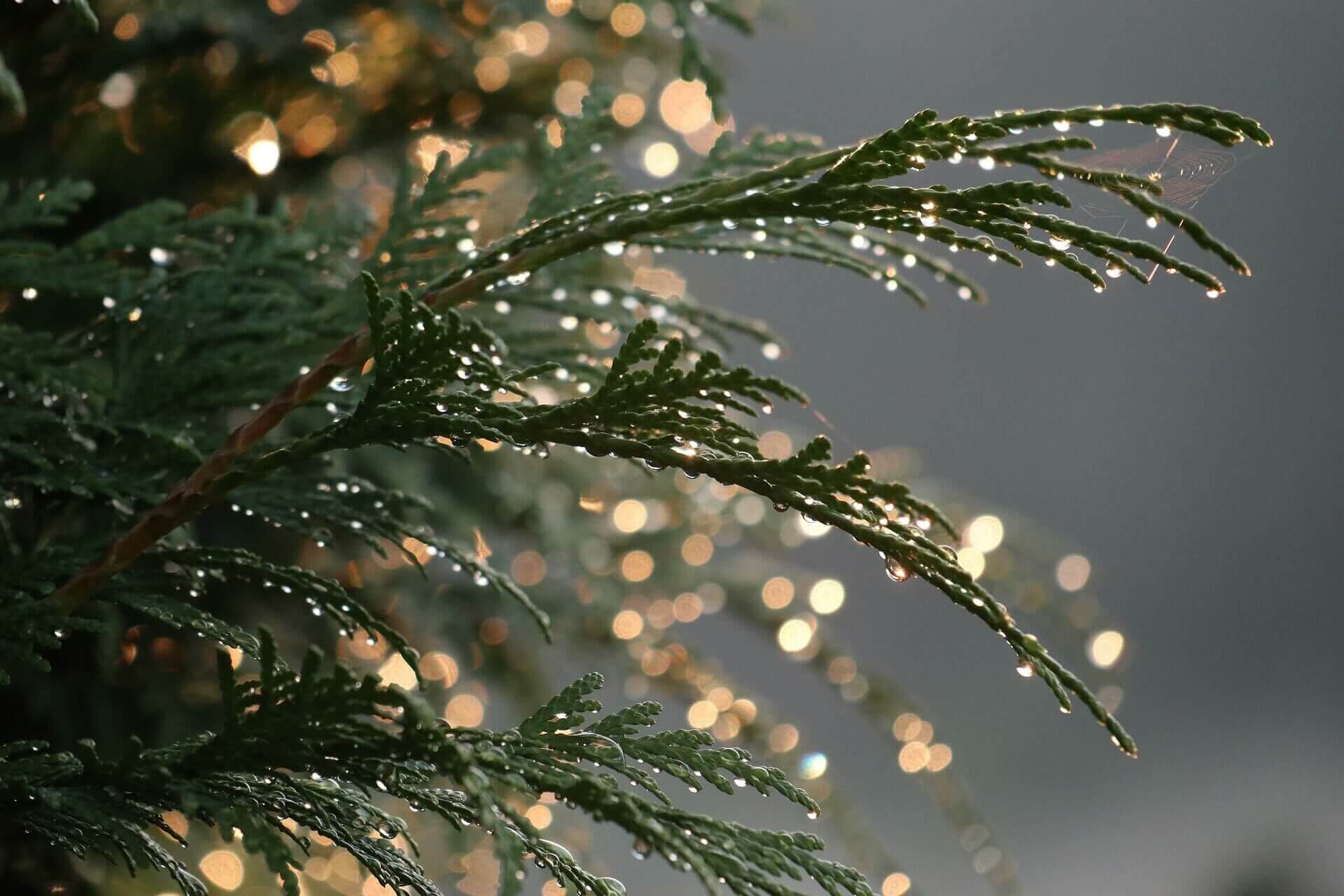If you don't want bare hedge plants, choose leafy hedges.
In the winter months, we’re all indoors a bit more than outdoors. So it doesn't really matter whether your hedge is blooming or not. But we can also well imagine that you find it might be a bit boring when you look outside. There is something you can do about that: plant leafy hedge plants in your garden. Problem solved. You'll have a beautiful hedge with leaves all year round. Would you like that too, but don't know which hedge plant to buy? Read this blog to get a better idea of which hedge plants (in alphabetical order) are leafy.
Conifer
You can still find them in older gardens: conifers (Leylandii). These hedges stay green and grow very fast. However, at a later age they often get spider mite or lice problems. You have probably seen this before: brown patches in conifer hedges. If you don't get to them in time and don't treat them properly, whole plants will die. You will also have to take into account a lot of pruning. If you don't mind all that, this plant is certainly suitable for your garden. Otherwise, read on.
Glossy medlar
If you appreciate red, this plant is the best choise for you. The young leaves of Photinia Fraserii Red Robin are bright red. This shiny medlar, which stays green all year round, provides a nice contrast in your garden. The hedge plant grows a little looser and can therefore be used well in a large hedge.
Green beech
The beech hedge or Fagus Sylvatica is found in many gardens. And with good reason. The leaves of the European beech turn brown in the autumn, but remain attached to the plant. They only fall off just before the new leaves appear. So you have a hedge with leaves all year round. And with plenty of privacy too.
Holly
There are many varieties of the Holly tree or Ilex. Of which we have Ilex Aquifolium, Ilex Aquifolium Alaska, Ilex Blue Prince, Ilex Heckenpracht, Ilex Heckenfee, Ilex Heckenstar and Ilex Blue Maid in our assortment. They have spiny and glossy leaves and live a long time, about 40 years. Flowers appear in spring and summer. The Ilex has red berries in autumn and winter. A beautiful sight alongside the 365-day green colour of the leaves.
Laurel
Prunus Laurocerasus or Laurel with its large, light green leaves grows quickly and is one of the most popular hedge plants. And it is easy to maintain. Laurel is known to be hardy and can survive in all sorts of conditions. A real asset for your garden.
Privet
If you do not want to spend a lot of money, the Ligustrum Ovalifolium (Privet) is a good option. It is a beautiful plant which grows quickly. If you want to keep your hedge in check, you will need to prune it 2 and maybe even 3 times a year. Privet is normally leafy, but in harsher winters it may drop its leaves.
Olive Willow
Elaeagnus Ebbingei (the Olive Willow) is a striking feature in your garden. This is because of its speckled, grey, leathery leaves. After the summer white flowers appear which spread a delicious scent.
Mock Holly
Besides the Holly there is also a ‘false’ Holly with the Latin name Osmanthus Burkwoodii. It grows slowly and has fine dark green leaves. In spring it produces white flowers with a nice scent.
Taxus
The Vienna tree, also called Taxus Baccata, is a very popular hedge plant. It is one of the strongest and best conifers. The hedge plant does not grow quickly, so that you do not have to prune much. Ideal if you have little time.
Thuja
The Thuja (Tree of Life) is not an expensive hedge plant either, but it is a strong one. It is not prone to diseases. It does grow fast, which means you have to do a lot of pruning. The evergreen leaves can survive even the harshest winters.
Which hedge plant do you prefer?
There are many possibilities and something for everyone. But no matter which evergreen hedge plant you choose, it all comes down to good care. That starts with the planting. Make sure you have good, humus-rich soil and enough moisture. It is useful to dip the roots of the plants into a large bucket of water before putting them in the ground. If you want to know more about care, we recommend you take a look at the product pages of the various hedge plants. We have conveniently listed everything there.


